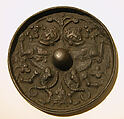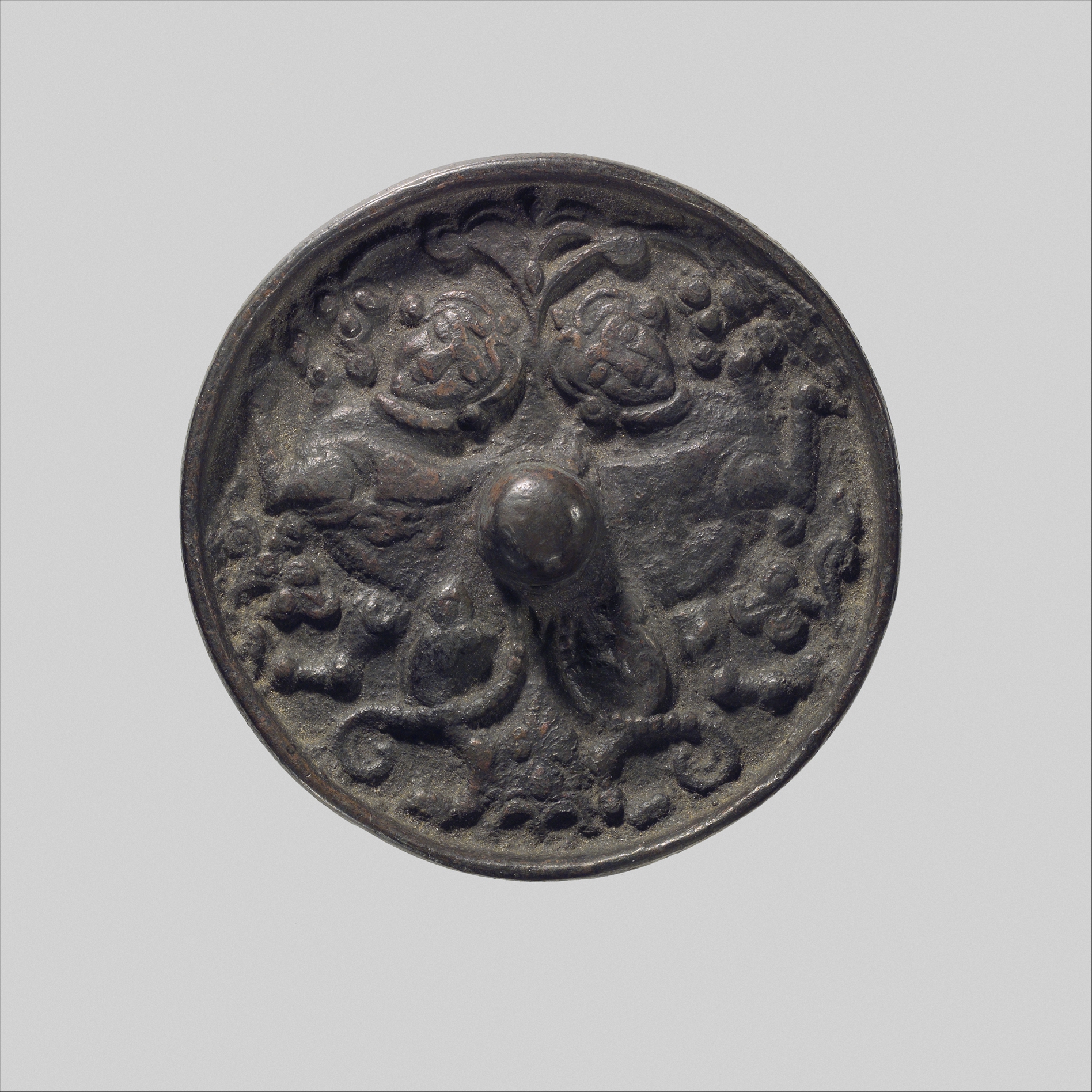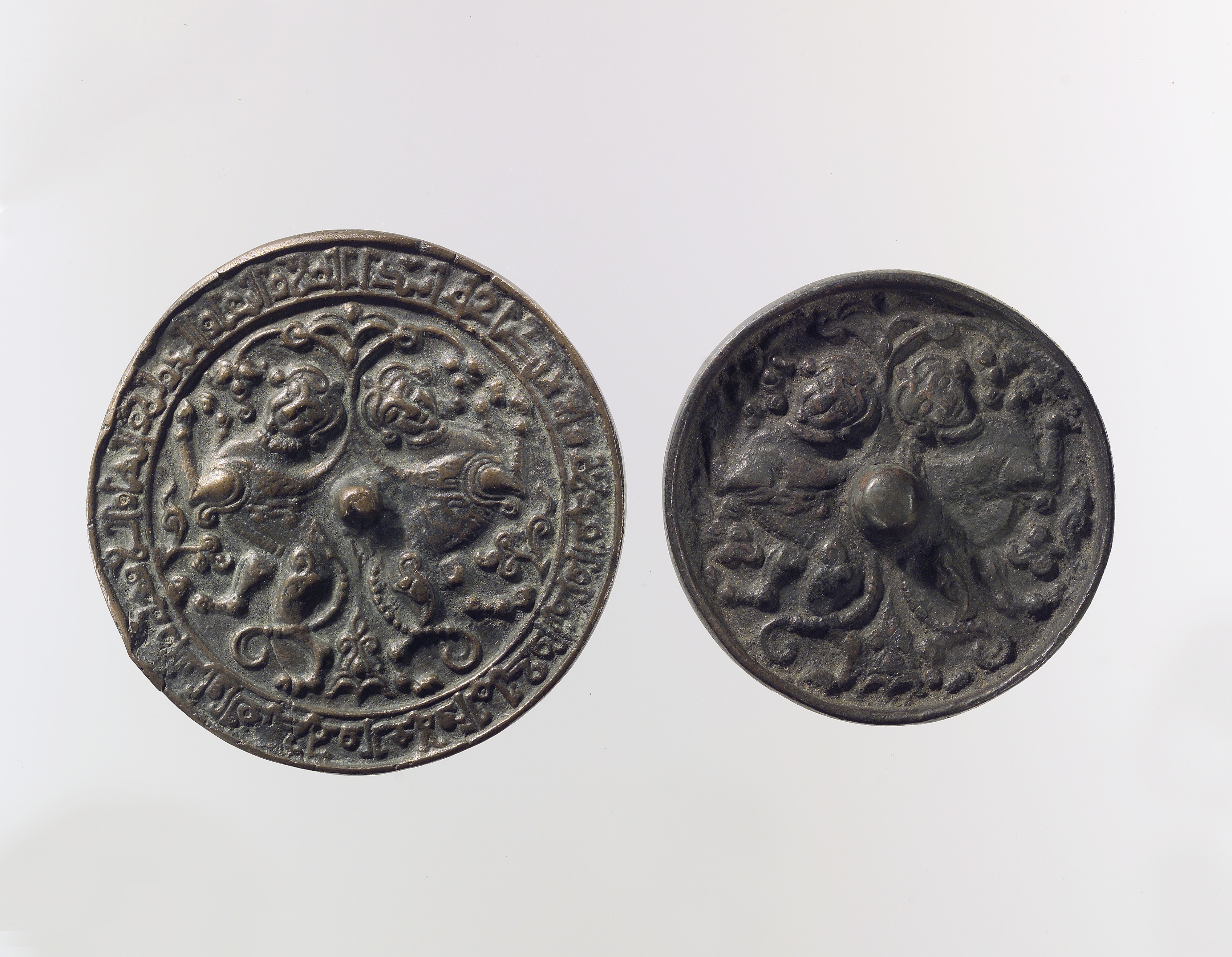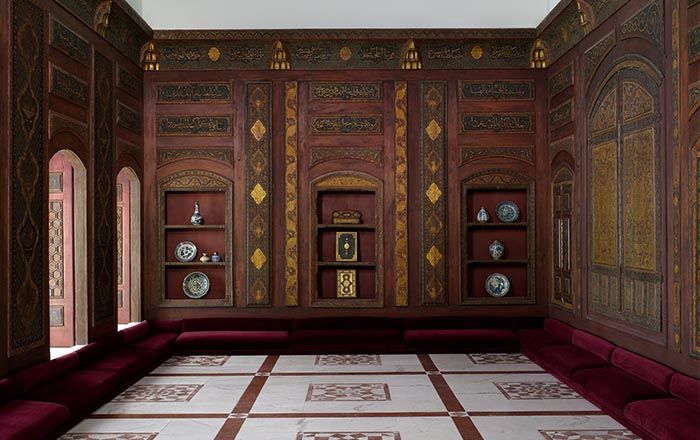Mirror with a Pair of Addorsed Sphinxes with Scorpion Tails
Not on view
The medieval Islamic period, specifically during the rise of the Seljuqs and other Turkish dynasties, witnessed the production of a large number of circular cast-bronze mirrors with a fully decorated reverse. Despite a relatively short phase of manufacture (twelfth to the thirteenth century), they enjoyed wide popularity within and beyond the Seljuq realm. The technique of sand-casting bronze would have enabled mass production for a broad market, as demonstrated by the large number of mirrors with similar motifs (specifically the type featuring a pair of sphinxes with scorpion tails). Beyond their practical function, they served as talismans, given their benedictory inscriptions and apotropaic motifs. Some are believed to have been used for divination or to possess other magical powers. Most mirrors bear figural decoration on their reverse sides, with iconography ranging from the zodiac to heraldic animals, the courtly cycle to ancient mythology.
The most common imagery depicted on mirrors relates to the sphinx, a fantastic creature revered since ancient times for its protective powers and solar/astral connotations. Most often, such as in this example, the depiction presents a pair of sphinxes, one a mirror reflection of the other. The human female head is again rendered frontally, while the feline body is seen in profile. The tail comprises a series of small dots ending in a curved peak, redolent of a scorpion’s tail. [The sphinx has been associated with the sun since ancient times, and this mirror may be compounding that power by presenting it in combination with the astrological sign of Scorpio. Because such mirrors have magic inscriptions on their backs (probably added in later eras) and/or have been discovered in burials, laid in some instances on the breast of the deceased, they draw strong comparisons to magic amulets, revered for their apotropaic power well into post-Seljuq times.]
This image cannot be enlarged, viewed at full screen, or downloaded.
This artwork is meant to be viewed from right to left. Scroll left to view more.




